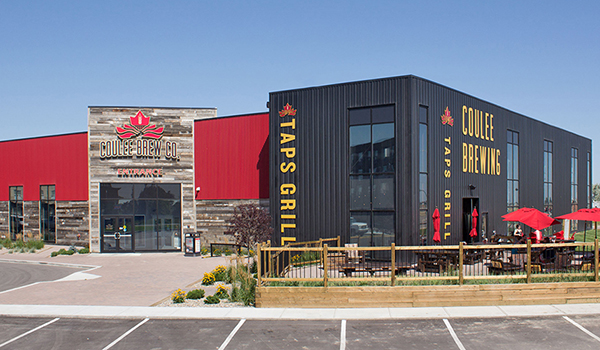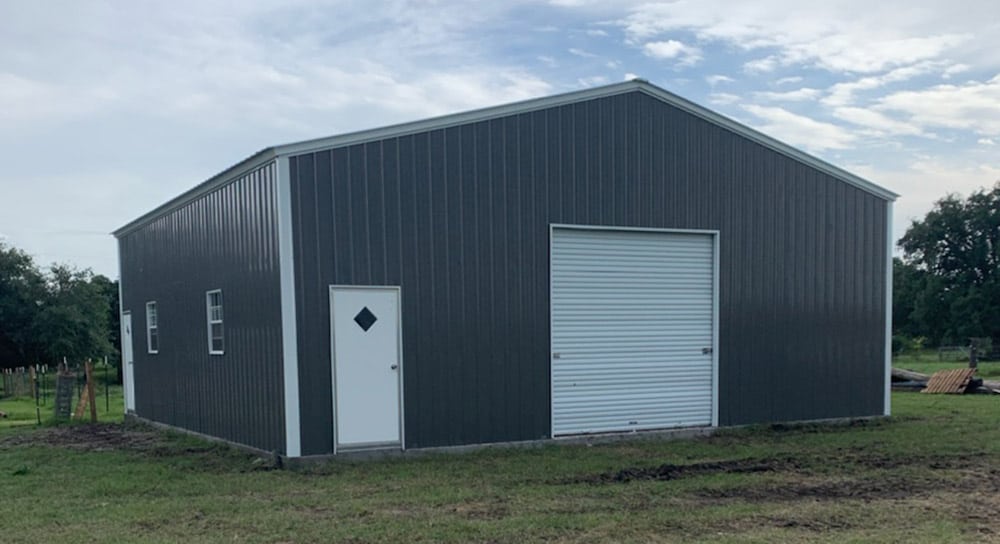Professional Overview to Steel Building Design: Maximizing Performance and Durability
In the world of building, the selection of structure material holds critical significance in figuring out the performance and long life of a structure. Steel, with its phenomenal toughness, toughness, and adaptability, has actually become a popular choice for contemporary structure style. Engineers and architects are continually exploring ingenious ways to harness the capacity of steel in creating lasting and long-lasting buildings. From maximizing layout factors to consider to applying cost-effective construction methods, the journey towards making the most of effectiveness and long life in steel structure design is a diverse one, supplying a mix of useful challenges and imaginative options that propel the market onward.
Advantages of Steel Buildings
Steel structures supply exceptional durability and cost-effectiveness compared to traditional building and construction products. The stamina of steel provides outstanding structural integrity, making it a favored choice for buildings that need to endure severe weather conditions or hefty lots. Steel is highly immune to insects, mold, and fire, making sure a much longer life expectancy with marginal maintenance requirements. In addition, steel is a lasting material, as it is totally recyclable and can be repurposed at the end of its helpful life.
In terms of cost-effectiveness, steel buildings are often more economical than frameworks made from various other products. The efficient construction process of steel structures can lead to reduced labor costs and shorter job timelines. Steel's longevity likewise equates to lower upkeep expenditures gradually, as there is much less need for substitutes or repairs contrasted to traditional structure products.
Layout Factors To Consider for Efficiency
Given the benefits of steel buildings in terms of resilience and cost-effectiveness, it is critical to focus on design factors to consider that take full advantage of efficiency and longevity. When designing a steel structure for optimum performance, elements such as the format, positioning, and insulation need to be very carefully considered.

In addition, including energy-efficient systems, such as cooling and heating, lights, and renewable power sources, can further enhance the performance of steel structures. By integrating these style considerations, steel frameworks can attain ideal effectiveness and longevity, providing lasting and cost-effective services for various construction projects.
Architectural Stability and Long Life

Furthermore, the choice of top quality steel and coverings is essential for longevity. Corrosion-resistant finishes safeguard against corrosion and deterioration, lengthening the life of the framework. Normal upkeep, including inspections for indicators of wear or damage, is also critical for determining and addressing concerns prior to they compromise the structure's integrity. By prioritizing architectural integrity in the layout phase and throughout the structure's life-span, owners can guarantee their steel structures continue to be risk-free, efficient, and long lasting for several years to come.
Cost-efficient Building And Construction Methods
Reliable construction methods play a pivotal duty in managing costs without compromising the quality and integrity of steel building projects. Additionally, pre-engineered steel structures are recognized for their sturdiness and need minimal maintenance, resulting in long-lasting cost financial savings.
One more affordable method is the design-build approach, where the layout steel buildings and building and construction stages are incorporated. This approach promotes partnership between the design and construction groups, enhancing the process and reducing delays and expense overruns (steel buildings). By involving all stakeholders initially, possible problems can be recognized and fixed early, saving both time and money
Furthermore, embracing sustainable building practices, such as making use of recycled steel and integrating energy-efficient attributes, can bring about significant cost savings over time. These methods not just lower building and construction waste however also lower operational costs via improved power efficiency. Finally, executing affordable building approaches is crucial see post for optimizing efficiency and guaranteeing the longevity of steel structure tasks.
Upkeep Tips for Longevity
Correct upkeep methods are essential for guaranteeing the longevity and structural integrity of steel buildings. Routine evaluations are important to determine any type of indications of corrosion, damage, or put on that could jeopardize the building's durability. As part of a thorough maintenance strategy, it is essential to quickly deal with any concerns that occur to stop them from intensifying and creating more extensive damage.

One more important upkeep suggestion is to evaluate the building's fasteners, welds, and connections to guarantee they are secure and in great condition. Any kind of broken or loosened parts ought to be fixed or changed quickly to keep the structural stability of the structure. By applying a positive upkeep routine, steel building proprietors can optimize the long life and efficiency of their structures.
Final Thought
To conclude, steel buildings provide countless benefits such as cost-effectiveness, long life, and performance. By very carefully taking into consideration layout elements, ensuring structural integrity, and using economical construction approaches, steel buildings can be enhanced for maximum efficiency and long life. Regular upkeep is navigate to this site likewise crucial to making sure the longevity of a steel building. On the whole, steel structures are a reliable and durable alternative for numerous building tasks.
From maximizing layout considerations to executing affordable building and construction methods, the journey towards optimizing efficiency and long life in steel structure style is a multifaceted one, using a blend of functional challenges and innovative options that move the sector forward.
Provided the advantages of steel buildings in terms of durability and cost-effectiveness, it is important to focus on style factors to consider that make best use of efficiency and long life. When creating a steel structure for optimal effectiveness, factors such as the design, alignment, and insulation have to be carefully taken into consideration. In conclusion, carrying out cost-efficient construction techniques is crucial for optimizing performance and making sure the long life of steel building projects.
By carefully taking into consideration style aspects, ensuring architectural honesty, and utilizing economical building and construction methods, steel buildings can be maximized for optimal efficiency and longevity.